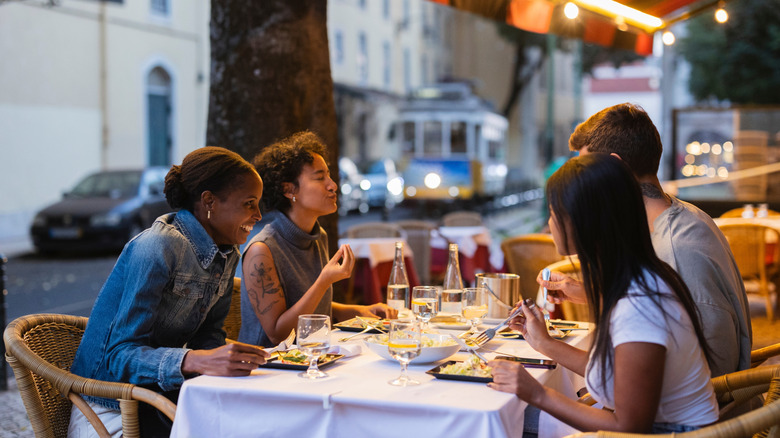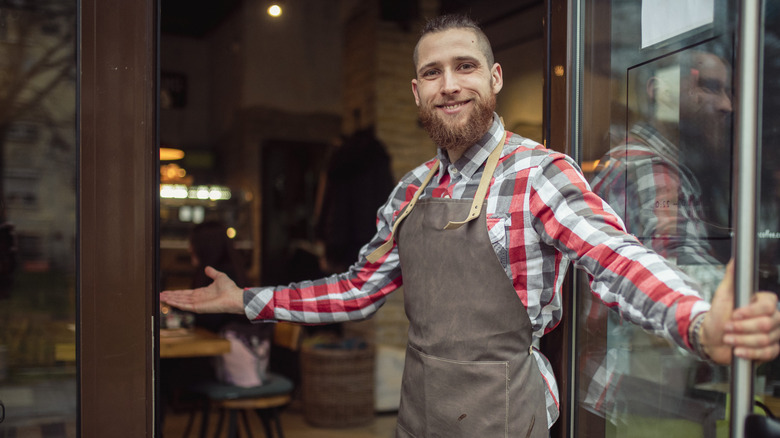If You Spot This At The Entrance Of Any European Restaurant, It's Likely A Tourist Trap
One of the best parts of traveling to Europe is enjoying the local cuisine. It doesn't matter if you plan on spending top dollar — well, euro — on a Michelin-starred restaurant, or stopping at a small cafe down a side street. It's all about the mouthwatering offerings that you can't get at home. However, there are plenty of tourist trap restaurants that may seem to be perfect, but end up giving you either bad versions of great dishes, or simply serve exactly what you're used to at home. There are a few ways to spot a tourist trap restaurant before you order, but there is one that should stop you before you even get to the door. If you spot a person calling to passersby, trying to convince them to come inside and order, you're likely at a tourist trap.
You may see this in touristy areas, particularly with restaurants that are facing monuments, a costly tourist trap to avoid when picking somewhere to eat. (You'll do much better walking a few blocks away from a tourist site like the Colosseum in Rome or the Eiffel Tower in Paris, for instance, in terms of price and quality.) A restaurant like this may also have plastic menus, which means the ingredients are unlikely to change seasonally, and pictures on those menus, so tourist who don't speak the language can see something familiar and choose their establishment.
How to find an authentic restaurant while dining in Europe
There are, of course, some good ways to find more authentic and high-quality cuisine while traveling in Europe. Travel pro Rick Steves suggests looking for a restaurant with a TV inside, especially in Italy. The reason is that this is likely more like a local sports bar/restaurant, which may be less expensive, and feature food that locals like to eat. You can also simply ask a local person where they like to dine. Consider what you'd suggest if someone were in your hometown, asking for your favorite restaurant. You're unlikely to recommend a chain over that hole-in-the-wall that has the best burgers ever.
You can also look for small menus written in the native language (multiple languages on a menu likely indicates that they're catering to tourists) on a chalkboard. A small menu means that the chef likely specializes in the dishes on there, and a chalkboard means the ingredients are probably changing with what's available by season. If you can't read it, use the Google Translate app that allows you to hold your camera over text and does immediate translation.
Of course, if you have picky eaters, particularly children who just aren't going to eat anything but spaghetti or chicken nuggets, or you're just really hungry and want something familiar, there is no reason you can't stop at those restaurants with the overly friendly hawker in the front. Not everyone has an easy time with their tummies on vacation, and something familiar may help with homesickness as well. No one is judging you if you choose a restaurant that way. It's just good to know what you're in for if you decide to dine there.

